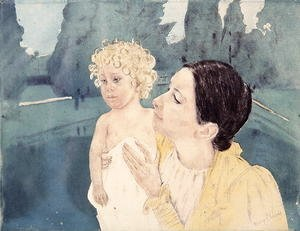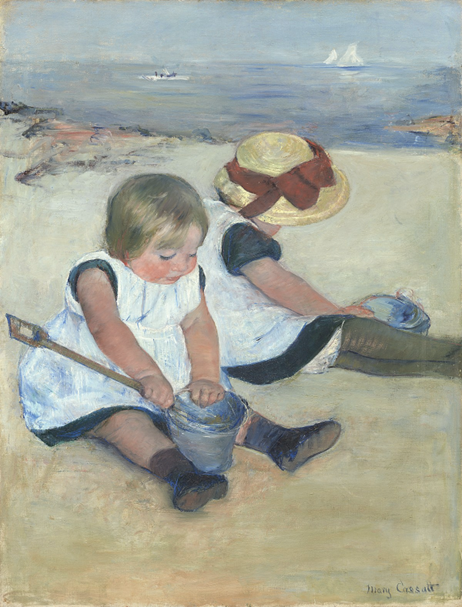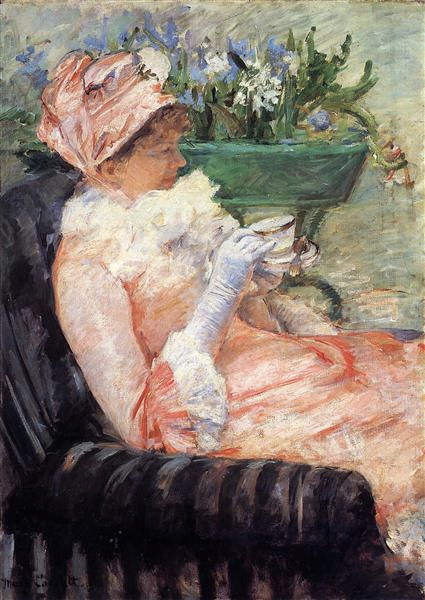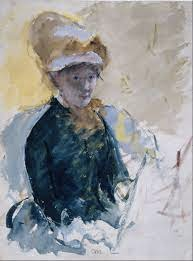When studying Mary Cassatt’s drawings, a few things become abundantly clear. Firstly, her skill in the Impressionist style of painting ranks among the best of its kind. Any of her most famous artworks are equal in both skill and emotion when compared to the best-known impressionist painters, such as Renoir and Monet.
Contrary to other impressionist painters who focused their brushes on scenes of nature, urbanism, or industrialism, Cassatt focused predominantly on the portrait. In particular, portraits of the everyday routines of women.
Cassatt lived during the time of the women’s rights movement, and this female empowerment is evident throughout her artwork. But most of all, for American artist Mary Cassatt, the relationship between mothers and their children captivated her so much that it inspired most of the artwork she created during her successful career.
Table of Contents
Mother and Child (1898)

The symbol of the mother and child is perhaps the most fundamental image known to humankind. Every living creature that has lived and survived on the planet had a mother. Even the Earth itself is known to all people as the great mother. But, as everything has a mother, everything was also once a child.
American painter Mary Cassatt understood this fundamental principle of the world and used it as her inspiration. Her claim to fame came from these mother and child paintings, and no artist is more famous than Cassatt in this maternal narrative.
In Mother and Child, an adoring mother embraces her child lovingly, and their hands connect them. The child stands naked and free as a symbol of innocence and purity. This painting can be seen as Cassatt’s Madonna and child piece, a famous religious theme found in classical art. It is just one of many drawings she would dedicate to this initial image.
Children Playing at the Beach (1884)
 Children Playing On The Beach – Mary Cassatt
Children Playing On The Beach – Mary Cassatt
When you think of Mary Cassatt’s artwork, images of children immediately come to mind. Her famous ‘children’ paintings have captured the hearts of many art lovers, and when it comes to conveying an impression of the innocence of a child, Mary is the best.
She painted dozens of paintings involving children. Each one uniquely embodies the magic and simplicity associated with being a child. Her paintings titled Little Girl in a Blue Armchair and Girl in a Straw Hat have been universally praised and rank among her most famous paintings.
Another such painting is her 1884 piece quaintly titled Children Playing on the Beach. In the painting, two children play in the sand with the calm ocean waves as their backdrop. You can practically feel the freshness of summer in such a way that only an Impressionist-style painting can achieve.
The Cup of Tea (1879)

Cassatt was a well-known feminist and proponent of equal rights for women. She lived during a time of massive change for women and benefited tremendously. As a result, she became famous for paintings of domestic scenes involving women’s daily lives.
One of the extraordinary skills any artist can have is to turn something mundane, like the everyday events of ordinary life, into something beautiful. Cassatt was a master of this, which is wholly evident in this 1879 painting of an upper-middle-class woman enjoying a cup of tea.
The Cup of Tea is just one of many artworks Cassatt would produce dedicated to highlighting the dignity of women. Each painting consists of a high degree of gracefulness and delicateness. If you study Mary Cassatt drawings, her fine attention to detail is a marvel.
Feeding the Ducks (1896)

Feeding The Ducks – Mary Cassatt
Like many other impressionist painters, Cassatt was also known for paintings involving water. Water has always played a part in the art for its hypnotic movement and symbolic meaning; in the Impressionist movement, however, it seemed to play a more significant role than in other artistic movements.
Cassatt incorporated water into her painting to accompany and amplify her other artistic ideals, such as everyday life, family, the innocence of children, and a mother’s love. All these motifs shine through beautifully in her 1896 painting titled Feeding the Ducks.
In the painting, a mother and a daughter sit in a boat as a group of ducks approaches them. They reach out their hand to feed the ducks some bread, symbolizing the relationship between human beings and nature. They are accompanied by a second woman, perhaps a family member or a servant. The wet nurse or maid is another theme throughout Cassatt’s art.
Self Portrait (1880)

As painter Mary Cassatt is most famous for being a portrait artist when most artists were moving away from the genre, it is only fitting to take a moment and talk more about her incredible self-portraits.
Mary Cassatt’s artwork involves many characters and scenarios from late 19th and early 20th-century life. Whether two women fanning themselves at the opera, or simply a woman reading the paper or sending a letter, Cassatt’s ability to portray these otherwise uneventful scenes is genuinely spectacular.
Although she mostly spent her time painting and portraying others, she also created a couple of self-portraits; however, she didn’t produce many. This can be perceived as a clear signal of her successful schedule as a painter, meaning that she didn’t have the time or the need to paint portraits of herself.
Conclusion
The more you learn about Mary Cassatt’s famous paintings, the more her incredible talent as an artist becomes apparent. Like other Impressionist painters, there is an unspeakable quality of wonder and beauty within her artwork that you could admire for hours on end. She is genuinely one of the best of her era.






